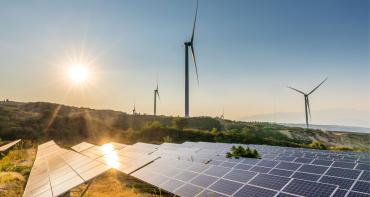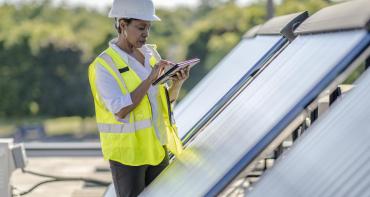Although Small Island Developing States contribute less than 1% to global carbon emissions that lead to climate change, they are among the most affected, due to a failure of action.

By Sagar Joshi, Commonwealth National Finance Adviser for Maldives and Labanya Jena, Commonwealth Regional Climate Finance Adviser for the Indo-Pacific region
For the second year in a row, climate action failure is ranked as the top global risk by the World Economic Forum, while four of the other risks in the top ten are also climate change induced.
Small Island Developing States (SIDS) are usually the first to bear the ill effects of climate change. The adverse effects range from a high frequency of climate-induced natural disasters impacting livelihoods and the economy, to the existential threat from rising sea levels. The expected losses due to climate change in some SIDS are estimated to be as high as 6.5% of annual GDP, compared to a global average of 0.5%.
Tackling the investment gap
These challenges require an immediate response from the countries concerned as well as the global community to build the required infrastructure and resilience to combat climate change. Doing so would require substantial investments in climate change mitigation and adaptation.
An analysis of the current climate investment landscape in SIDS shows that the investment gap is already significant and increasing further. It is also observed that the scale of international climate finance in SIDS needs to grow by over five-fold if set climate objectives are to be met.
Climate finance in most SIDS has remained constrained due to several factors including, but not limited to, over-leveraged debt, non-investible grade credit ratings, underdeveloped financial markets as well a lack of government-supported mechanisms for investments. Addressing these challenges will need structural changes that could take years to be incorporated and might not align with the urgency of climate investments.
Risk mitigation – an immediate solution
An immediate and effective solution would be to have risk mitigation interventions, like credit enhancement and credit guarantees. These interventions could structure development capital to absorb some of the country-level and project-level risk, therefore making it attractive for financial institutions.
Credit enhancement is a risk mitigation mechanism that could improve the credit profile of climate projects in SIDS, increasing access to capital. A credit enhancement trust could be set up using grants and concessional capital from international Development Financial Institutions (DFIs), bilateral funding institutions, or philanthropies.
This trust can directly invest in the climate projects, taking up a junior position, thereby allowing private financer to take less-risky senior position. This mechanism could support the climate-resilient infrastructure and energy projects in SIDS, by government or public-private partnerships, and can unlock long-term capital.
Maximising impact
Another effective risk mitigation mechanism could be a credit guarantee mechanism. A guarantee mechanism creates a bilateral loss-sharing agreement between a credit guarantee fund, funded by development capital, and international lending institutions.
The guarantee fund would have multiple loss pools which might be called in to compensate the lending institutions in case of delay in debt servicing and for a portion of losses incurred due to payment default by the borrower. The guarantees can be structured to address both the project level as well as sovereign risk.
Both credit enhancement and guarantee structures have been implemented across multiple countries in the past and have shown a fair amount of success, thus improving the access to capital for its beneficiaries. An analysis of past such interventions shows that if implemented effectively, such structures can leverage over 10 times in investments from different sources.
The risk mitigation measures strategically utilise the development capital, crowding in the investments from multiple sources and maximising the impact.
This also diversifies and strengthens the financial support available to the climate sector in SIDS countries while also boosting investors’ confidence in the economy and stimulating financial support for climate action.
Media contact
- Josephine Latu-Sanft Senior Communications Officer, Communications Division, Commonwealth Secretariat
- +44 20 7747 6476 | E-mail



